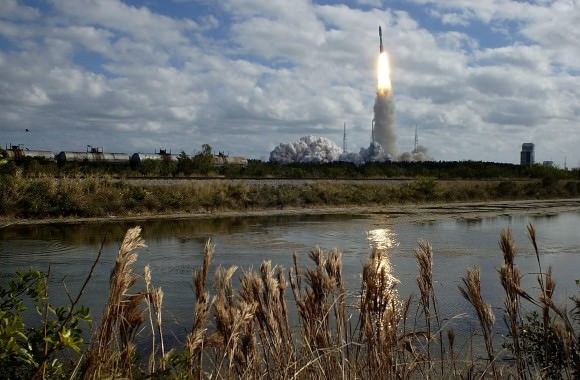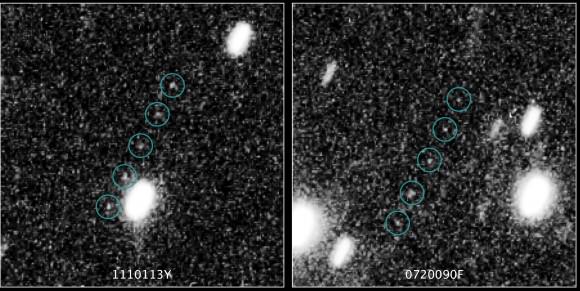Pluto, humanity is getting ready to change your image. The New Horizons spacecraft is awake once more after emerging from hibernation as planned yesterday (Dec. 6). And after a decade of sailing through space, there will be a historic first encounter with the dwarf planet in July.
The story may not end there, either. Mission managers are working hard to make the case that since New Horizons is way “out there” anyway, it would be a great idea to put the spacecraft past another object later in the mission. That hope rides heavily on the success of the Pluto encounter July 14.
“Technically, this was routine, since the wake-up was a procedure that we’d done many times before,” said Glen Fountain, New Horizons project manager at the Johns Hopkins Applied Physics Laboratory, in a statement. “Symbolically, however, this is a big deal. It means the start of our pre-encounter operations.”

It’s been a neat few years for the mighty machine, even before getting to the main event. New Horizons launched from the Kennedy Space Center in 2006 and made a close pass by Jupiter and its moons in 2007, doing some science en route — including catching a huge explosion from Io, a volcanic moon.
Since then, the spacecraft has dutifully been sending back pictures from across the Solar System, including a picture of Neptune’s moon Triton, and several of Pluto — the first time a spacecraft will venture that far. In between the science work and checking out systems, New Horizons spent two-thirds of the journey sleeping to conserve energy for the big show.
Up next for the spacecraft will be several weeks of checkouts and also putting together the commands to make sure New Horizons is successfully guided past Pluto and its moons (a process that got complicated over the years as more moons were discovered.) After that, if the spacecraft holds out and the budget is approved, managers want to swing it past a Kuiper Belt Object.

The Kuiper Belt is a collection of icy bodies past Neptune’s orbit. These small worlds are believed to be building blocks of the Solar System, showing off a time billions of years ago when there were no planets or moons — just chunks of rocks and ice, which slowly collided and coalesced over millions of years to form the familiar landscape we see today.
New Horizons team members plan to ask for more money for this mission in late 2016, as they gather information via the Hubble Space Telescope and other sources to make their case. (They already have some targets in mind.) But the focus will definitely be on Pluto in the coming months.
Next year, by the way, will see another planned close encounter with a dwarf planet when NASA’s Dawn spacecraft gets to Ceres in the spring.


I am eager to see the images the New Horizons spacecraft releases of the surface of Pluto. It is crazy that we have developed so many amazing technologies in such a short amount of time. I am pleased that the government is investing money in these projects.
You may see images that are better than any existing images of Pluto in the next month or so. New Horizon’s images become better than Hubble images in January. They will get progressively better as New Horizon’s closes with Pluto.
What a year for Solar System Exploration 2015 will be.
Two missions especially, that Im sure most of us who read UT will have followed from launch, and their subsequent adventures during the voyage.
Of course ‘Dawn’ has had a rather more eventful voyage..what with spectacularly studying 4 Vesta on its way to the absolutely fascinating 1 Ceres…and getting the jump on New Horizons somewhat…beating NH to a Dwarf Planet by a few weeks!
I have often wondered whether Ceres will prove to be a rather close relative of Pluto (i.e a migrating object from the Kuiper Belt) or an improbable survivor from the violent early life of the Solar Sytem.
Well, give it a few more months and Im sure these probes will tell us beyond question! (as well as uncover numerous other questions that no one has thought to ask yet…which seems to be the way of these truly trailblazing mission!)
While the ‘face of Pluto’ being revealed at last is just a dream come true for us all…I am holding out some hope that Ceres is going to wind up proving to be the more dynamic and intriguing place….which if is correct is lucky in a way, since if there is a very special discovery by Dawn…(and Ill say it..liquid water..a faitn hope…but just maybe) then we wont have to wait half a lifetime for a follow up mission to arrive.
Anyway…good luck to the teams and their robotic avatars!
yeeessss!!!!!